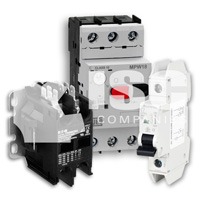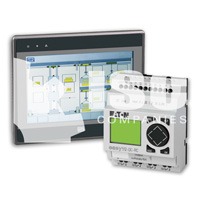 Pilot Devices, Push Buttons & Control Relays
Pilot Devices, Push Buttons & Control Relays
ISC Automation (a division of ISC Companies) is a supplier of industrial automation components and is a UL508A/698A listed panel shop that designs and builds custom control panels for industrial applications. For more information, please contact us by phone 763-559-0033, by email [email protected], or by filling out our online contact form.
Pilot Devices
A pilot device controls the operation of another device (pushbuttons, selector switches) or indicates the status of the operating system (pilot lights, stack lights, signal beacons). This communication can be from a human operator to a machine or from a machine back to an operator. These devices are designed for two general markets: the IEC (global) market and the NEMA (North American) market.
Pushbuttons / Push Switches
A control device used to manually open and close a set of contacts. Pushbuttons are available in a flush-mount, extended-mount, with a mushroom head, illuminated, or non-illuminated. A typical pushbutton uses an operating plunger, a return spring, and one set of contacts. There are two types:
- Push-to-Make / Normally Open (NO): Contacts are normally open and no current flows through. Depressing the button causes the contacts to close. When the button is released, the spring returns the plunger to the open position. Examples include a doorbell, computer power switch, calculator buttons, keys on a keyboard.
- Push-to-Break / Normally Closed (NC): In the normal position, the contacts are closed to allow current flow. Depressing the button opens the contacts preventing current flow. These are momentary contact pushbuttons because the contacts remain in their activated position only as long as the plunger is held depressed. An example is a refrigerator light switch.
Many pushbuttons are designed to function as both push-to-make and push-to-break switches. The wiring of the switch determines which function.

Eaton Pushbuttons and Selector Switches
Selector Switches
Used to manually open and close contacts. Selector switches can be maintained, spring return, or key operated. Selector switches are available in two-, three-, and four-position types. They are used for multiple commands in one device.
Pilot Lights
Provide visual indication of operating condition. They are normally used for ON/OFF indication, caution, changing conditions, and alarm signaling. They are available in a variety of colors.

C3 Controls Red Pilot Lights (L-R) 13mm, 16mm, 22mm, 30mm
Control Devices
Electromechanical Relays (Switches)

Eaton Electromechanical Relay
Electromechanical relays (EMRs) are switches that open and close circuits electromechanically or electronically rather than manually. They control one circuit by opening and closing contacts in another circuit. It takes a small amount of power to turn on a relay, but the relay can control something that draws much more power. Relays can contain one or more sets of contacts. Industrial relay contacts are usually rated at 10 amps or lower. If more capacity is needed, magnetic contactors are used as a relay.
There are three terms that are important to understand when dealing with relays.
- Pole: the number of isolated circuits that can pass through the relay at one time
- Throw: the number of different closed-contact positions per pole
- Break: the number of separate contacts the switch contacts use to open or close individual circuits
Solid-State Relays (Switches)

Eaton Solid-State Relays
Solid-state relays (SSRs) are electronic switching devices that switch on or off when a small external voltage is applied. SSRs consist of a sensor that responds to a control signal, a solid-state electronic switching device, and a coupling mechanism to enable the control signal to activate the switch. It is like an electromechanical relay, but has no moving parts.
SSRs control load currents with solid-state switches like SCRs (silicon-controlled rectifiers) or power transistors. Transistors are current amplifiers where a small current switches a DC circuit on or off. SCRs, or a combination of SCRs called Triacs, are widely used for AC switching
Input signals enter the device through isolation mechanisms like transformers, reed relays, or optoisolators. SSR applications have rapid on/off cycling, which would wear out moving parts in electromechanical types.
 Content on this page was created using excerpts from the Power Transmission Handbook (5th Edition), which is written and sold by the Power Transmission Distributor’s Association (PTDA).
Content on this page was created using excerpts from the Power Transmission Handbook (5th Edition), which is written and sold by the Power Transmission Distributor’s Association (PTDA).




You must be logged in to post a comment.